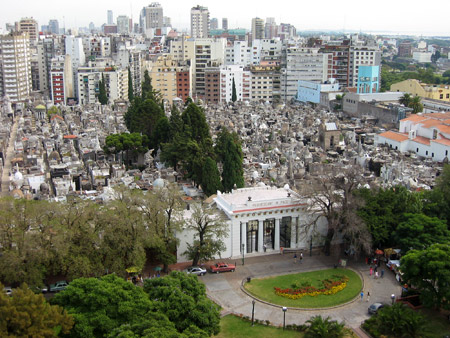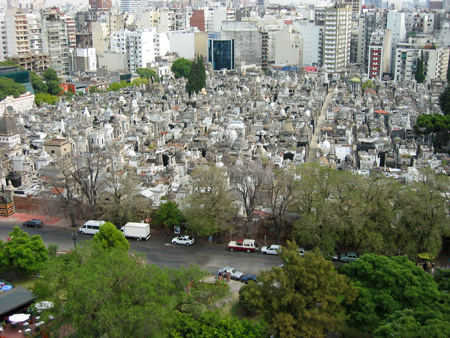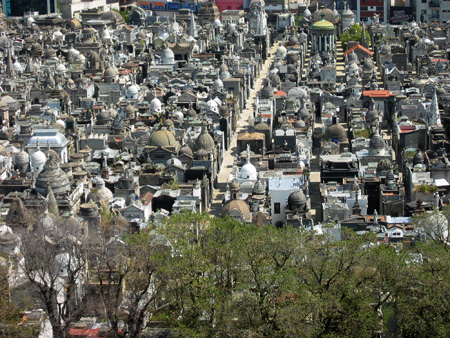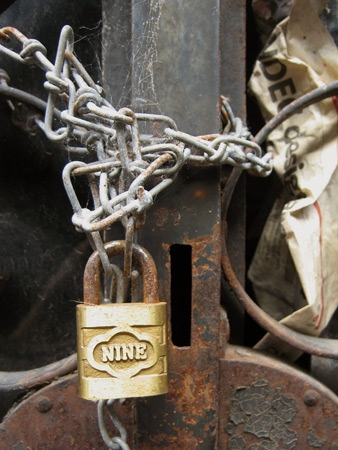
Documenting Recoleta Cemetery in Buenos Aires since 2007
Surviving the non-stop attention of tourists can be hard work. The cemetery’s resident cats find lots of interesting places to take a nap:
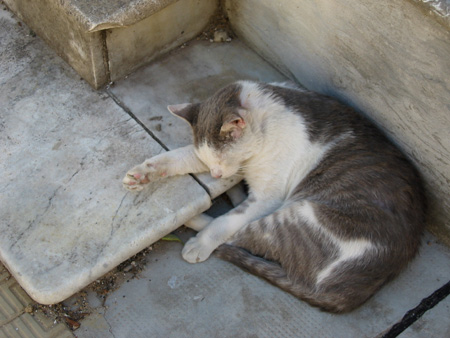
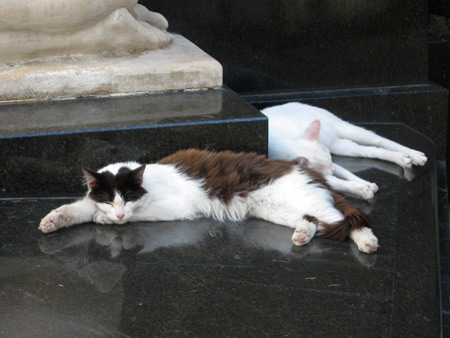
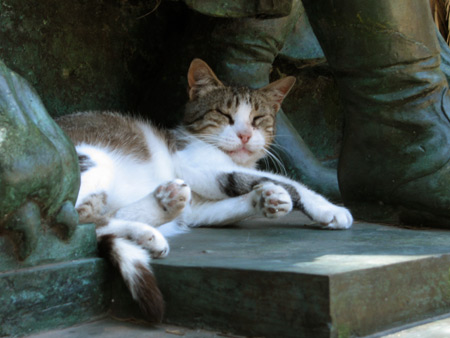
Although the cemetery really shines on a pleasant day, don’t let ominous weather postpone a visit. In fact, cloudy skies add a special touch… it is a cemetery after all:
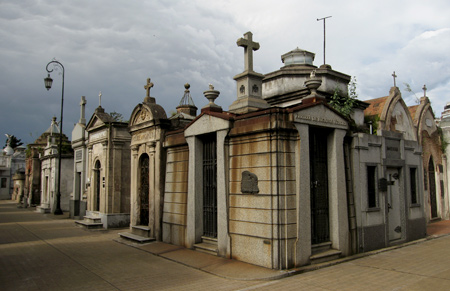
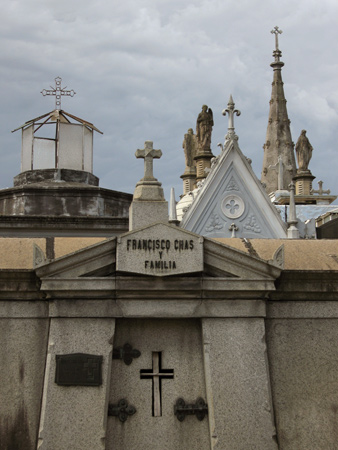
Sometimes the sky itself can be just as interesting. Darken the foreground to add a little spookiness:
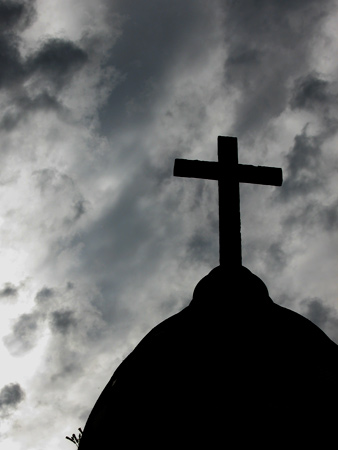
Cloudy days are wonderful for photographers since direct light washes out a lot of detail in this sea of concrete, granite & marble. Set your camera on black & white mode for better shots if you can’t return another day.
Leave a CommentThe Etoile Hotel is one of the few places in Buenos Aires with views that look directly over Recoleta Cemetery… a great place to stay for the taphophile in all of us.
I used to recommend going to the 14th floor, ordering a drink from the bar & stepping out on the balcony for some wonderful pics. Unfortunately it seems that they’ve caught on. Non-guests can no longer sneak in for a nice view, but if you want to pay for a room this view can be yours:
